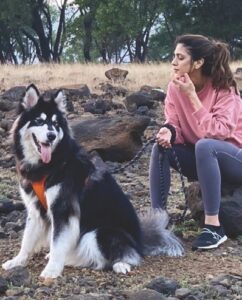Fence up against fear: Manage your pooch with right training!
Many of us are dog lovers and feel a surge of happiness at the mere sight of a dog passing by, but many people don’t feel the same way for various reasons. Either from a bad experience or simply lack of dog exposure. As responsible pet parents, we must ensure we respect people’s boundaries.
–by
 How many of us have been in these awkward situations with our pets behaving in a less-than-desirable manner around people who are visibly terrified of them? I’m sure most of us have. A lot of people might not feel comfortable around pets, you should be careful about this.
How many of us have been in these awkward situations with our pets behaving in a less-than-desirable manner around people who are visibly terrified of them? I’m sure most of us have. A lot of people might not feel comfortable around pets, you should be careful about this.
Prevention is always better than cure. Teaching your puppy good manners from day one is of prime importance and will determine how they behave in adulthood.
Here are five tips to help manage your dog around people who are uncomfortable or scared of dogs.
- Take control with ‘control commands’
Teach your pet basic control commands, like – sit, stay, and down. Control commands are an essential part of training. Putting your pet in a sit-and-stay is handy when using an elevator, waiting in a vet’s clinic or any public space where you need your dog to settle down. A sit, stay, or down also comes in handy if you have a dog who likes to jump up to greet people. If you have guests coming home, you can put your pet in a sit, stay or down before opening the door and encourage your guests to give them a treat for staying in position, teaching him how to greet people politely.
- It’s all in recall
 First, you should teach a puppy a strong recall (to come when called). It is one of the most important safety commands. If your pet wanders out of your reach or goes running towards a stranger, a strong recall should get him to come immediately back to you.
First, you should teach a puppy a strong recall (to come when called). It is one of the most important safety commands. If your pet wanders out of your reach or goes running towards a stranger, a strong recall should get him to come immediately back to you.
- Love and “Leave it” command are all you need
Teaching your pet “leave it” command is vital for getting them to snap out of whatever they’re fixating on and get his attention back on you. A strong leave-it command is essential if your pet pulls you towards strangers/other dogs while on a walk or gets distracted by many sights and smells.
- Preoccupying ‘paw’fection
Let’s say you have house guests who are afraid of dogs. Instead of locking your pet in a room or tying him, give him something to do. You can achieve this by keeping him busy with a chew or a bone. Chewing is a de-stressor for dogs, keeping them preoccupied for long periods. Stuffing a Kong with treats or their meal can also be a smart way to keep your furry friend busy.
![]() Leash it up – for their safety
Leash it up – for their safety
Always keep your pet on a leash in public spaces. Leash training your pet from when they’re young to have a positive association with their leash is important. You can achieve this by giving your pet good experiences when on a leash, like going for long walks, taking him with you to run errands, praising and rewarding him for not pulling, etc.
- Tiring out your pet by taking them for a long walk or playing a few rounds of fetch before you have people over can be very helpful. A mentally and physically stimulated dog is happy and less likely to engage in unwanted behaviour. As opposed to a bored dog with a lot of pent-up energy.
- Contact a positive reinforcement trainer to teach you how to train your puppy from the beginning. It is much easier to teach a young pup how to behave desirably instead of undoing undesirable behaviour from an older dog.
- Be generous with rewards in the form of a few treats and lots of praise and affection when your pet has done something right. We are quick to reprimand our pets. Let’s be quick to praise them as well.
 Our job as responsible pet parent is to do the right thing by teaching our pets how to behave in a human-dominated world. Teaching your pet manners with the proper training ensures adequate freedom, leading to a good life. Build a strong relationship with your pet by starting training early on. Structured play, early socialisation, and ensuring they have many positive experiences are essential for raising a well-balanced pooch Communicate with them often. Your voice is your biggest asset and is the best training tool. You need to build a strong relationship with your pet for them to want to listen to you. At the end of the day, the biggest reward should be you.
Our job as responsible pet parent is to do the right thing by teaching our pets how to behave in a human-dominated world. Teaching your pet manners with the proper training ensures adequate freedom, leading to a good life. Build a strong relationship with your pet by starting training early on. Structured play, early socialisation, and ensuring they have many positive experiences are essential for raising a well-balanced pooch Communicate with them often. Your voice is your biggest asset and is the best training tool. You need to build a strong relationship with your pet for them to want to listen to you. At the end of the day, the biggest reward should be you.
(Siya Kumar is a dog trainer at Nico Training, Mumbai)


 Leash it up – for their safety
Leash it up – for their safety